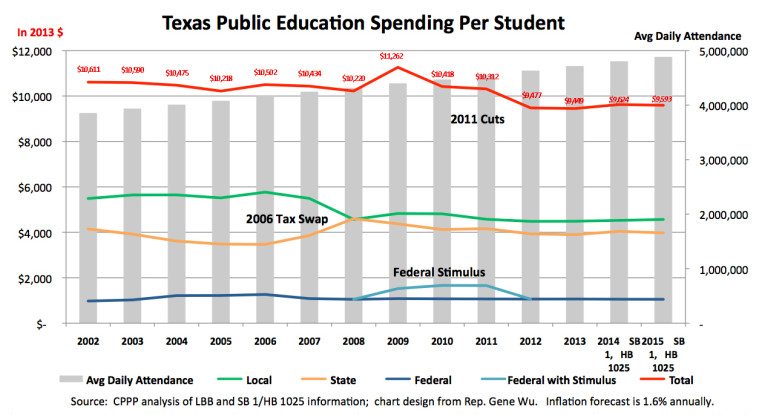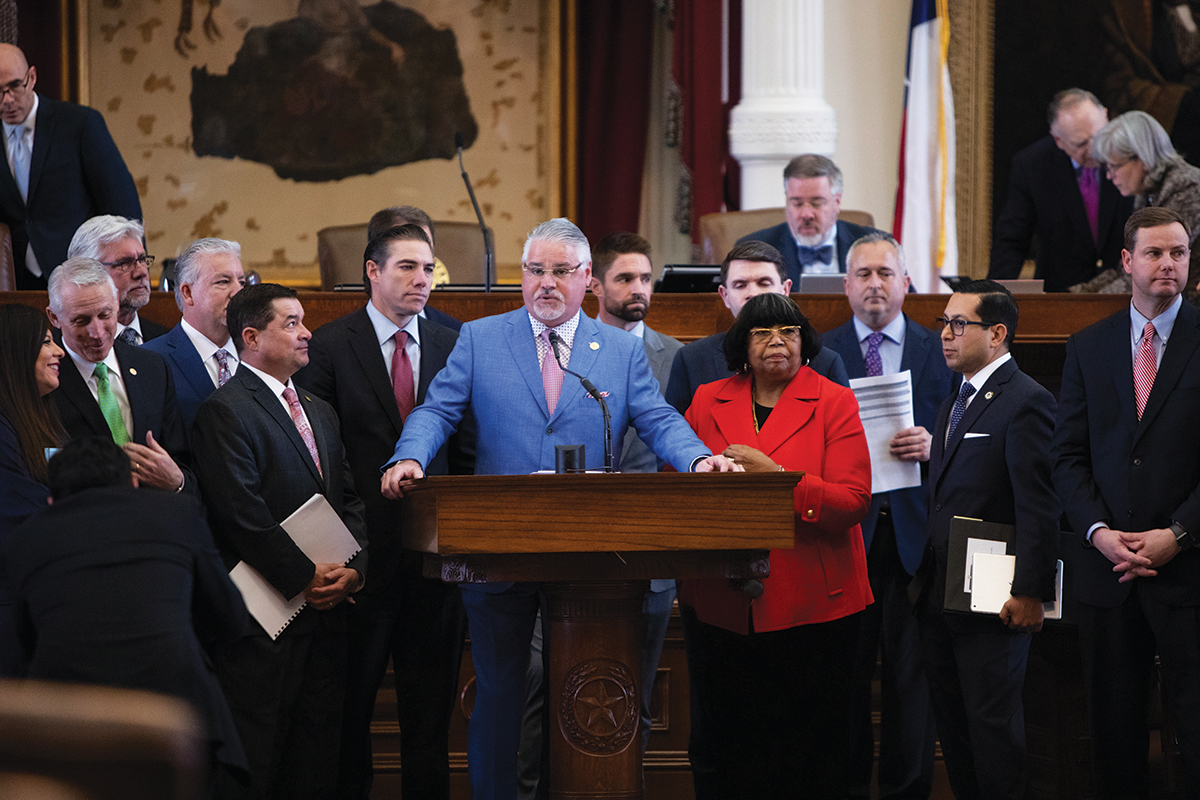The New School Finance Picture

Three long months ago—back when folks were still calling 2013 the Legislature’s “kumbaya” year—school funding was one of the things that had Republicans and Democrats singing and holding hands.
After cutting $5.4 billion from schools in 2011, lawmakers came back together this year to add $3.4 billion back in.
That extra cash, along with a big scaling back of standardized testing in high schools, was enough to prompt the judge in the big school finance trial to reopen the case. Lawyers for school districts, charter school groups and the state will regroup to argue the numbers again in January.
So, at last, here’s the only chart you ever need to see about school finance in Texas:
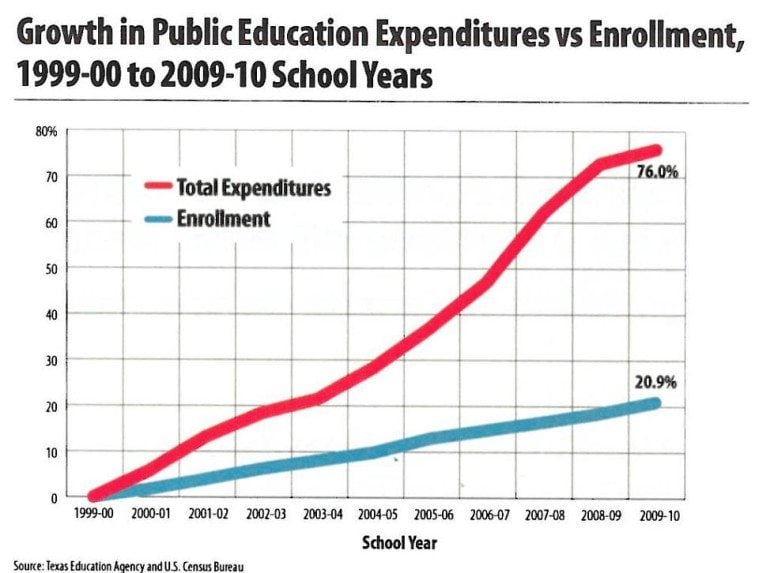
Kidding! But ultra-simple (and outdated) pictures like this are still used regularly to paint Texas’ school system as a bloated, out-of-control money-sucker.
Nothing is simple in Texas school finance. Even after two years, whether the Lege cut $5.4 billion or $4 billion from schools in 2011 is a matter of entrenched debate. Federal, state and local money all figure into the total. Your local school district’s budget depends on its enrollment, its tax rate and what the local property is worth—plus a recapture system that redistributes money from the richest districts to poorer ones.
Now that the dust has settled on the session, and as schools get the 2013-2014 school year started, it’s a fine time to step back and look at how the next budget figures into big school finance trends.
The first thing to remember is that the state’s public school system is growing at a steady clip.
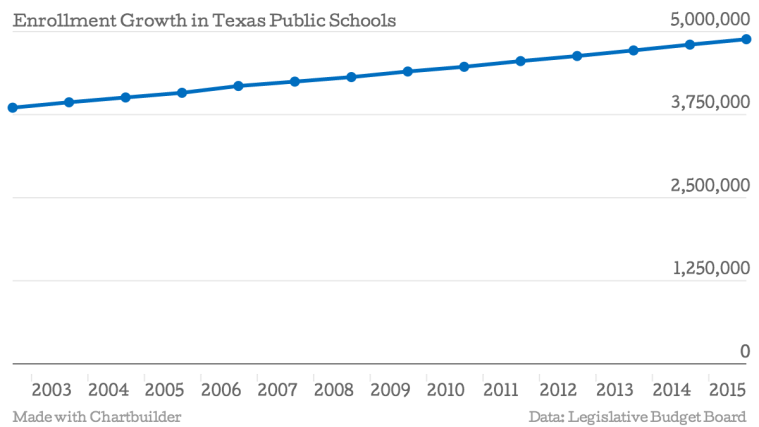
And the students coming into the school system are the ones who cost more to educate.
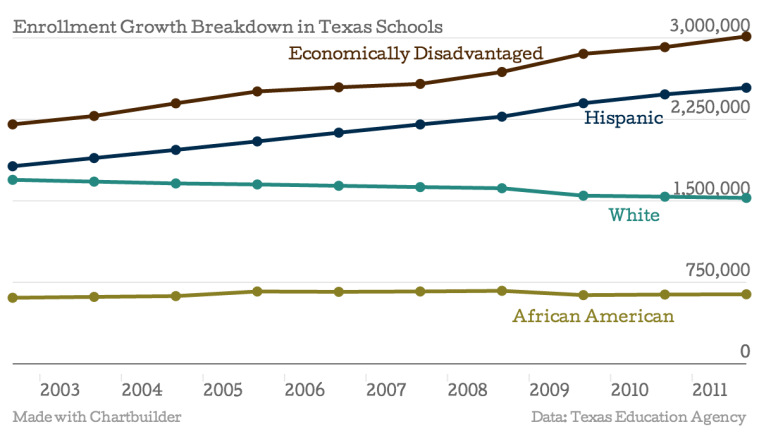
Since the last estimates from before the session, we’ve got a better idea of what school spending will look like in 2014-15, as well as what the state spent in 2012-13. In her breakdown of the new school budget picture, Center for Public Policy Priorities analyst Chandra Villanueva noted that in the next two years, Texas will still spend $761 less per student than it did five years ago. Here’s a year-by-year look based on CPPP’s data, zoomed in to show how it’s been changing:
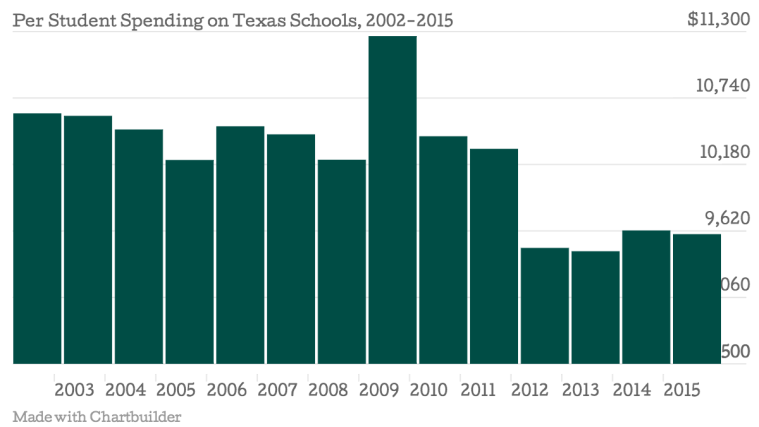
When she shared these numbers—they’re based on reporting from the Legislative Budget Board—Villanueva explained that the spike in 2009 only reflects the Lege spending more to undo a payment deferral from the previous session.
Students are better off in the next two years than they were the last two. But the long-term trend—the most important measure for a system like public schools—is less spending over time:
This chart from CPPP is based on one produced by Rep. Gene Wu (D-Houston). The gray bars in the background show Texas’ growing enrollment, and that red line across the top is the overall per-student spending shown in the previous chart.
When District Judge John Dietz ruled in February that the state’s school finance system was unconstitutional, he pointed to a similar (though less colorful) chart from the LBB that showed inflation-adjusted spending hadn’t changed much since 2004, even though the school system has to serve many more students:
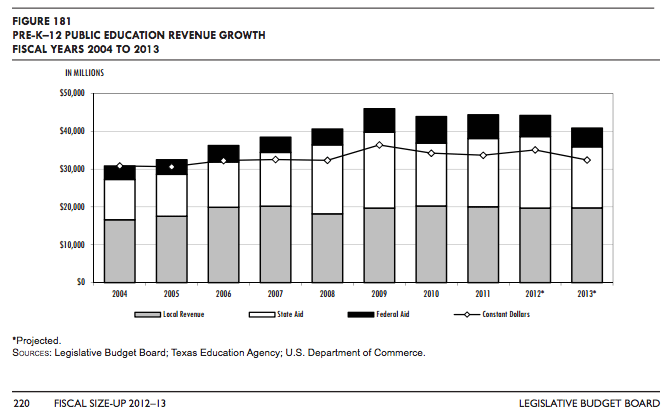
When he and the lawyers get back together in January, they can add two more years to the trend line. This is an unscientific Photoshop job, but based on CPPP’s inflation-adjusted numbers, I’ve extended that chart out a couple years:
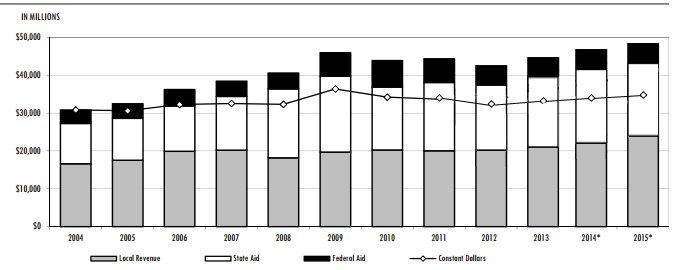
What that line of little diamonds shows is that, once you correct for inflation, Texas’ school spending has increased pretty modestly over the last 10 years. Its enrollment over the same stretch has risen by almost a quarter.
Remember that the next time you hear about reckless waste in public education. Even with some of the damage from 2011 undone, the long-term trend is that we’re spending less on each young Texan’s education.
